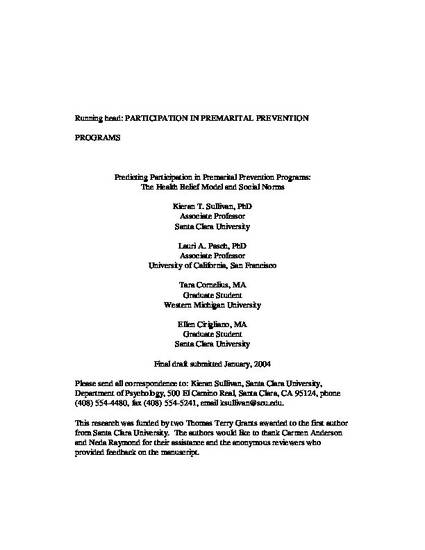
The development of effective programs to prevent marital dysfunction has been a recent focus for marital researchers, but the effective dissemination of these programs to engaged couples has received relatively little attention. The purpose of this study is to determine which factors predict couples' participation in premarital counseling. Predictive factors were derived from the health prevention literature, with a particular focus on the health belief model (HBM). Couples' beliefs and attitudes about premarital counseling were assessed at least six months before their wedding, and participation was assessed after their wedding. Results indicate that the strongest predictors of couples' participation were couples' perceptions of barriers to counseling and whether they had counseling recommended to them. These variables predicted participation even after controlling for important demographic variables. Recommendations for recruiting engaged couples for premarital counseling are made based on the findings.
